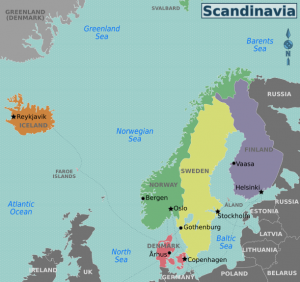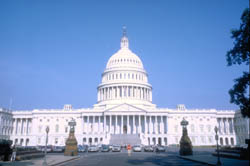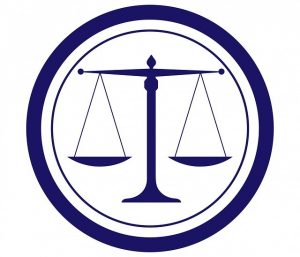As we have recently commemorated the 20th anniversary of the September 11, 2001, terrorist attacks, we have been reminded once again of the horror of that day, the lives tragically lost, and the aftermath of the attacks – psychologically, socially, politically, legally and with regard to health concerns of those who worked for months and years at Ground Zero. But we have also been reminded of the outpouring of love, concern, admiration and assistance that also emerged, not only in the United States but throughout the world.
Many stories can be cited that may sound unbelievable but which should be taken seriously – because they provide hope and inspiration in different ways and teach us lessons about love.
Stories of Inspiration
In the September 2021 edition of Smithsonian magazine, the story of Jeanette LaFord Menichino, as told by her sister Anita LaFond Korsonsky, is revealing and beautiful. When Anita could not reach her sister, who worked on the 94th floor of the World Trade Center’s North Tower, on that fateful day, Anita had a remarkable experience:
“It wasn’t like the burning bush or anything, but I suddenly had a feeling – not even necessarily in words – of God telling me, ‘Don’t worry. She was so close to heaven, up on the 94th floor, that I just reached down and took her by the hand. She is safe now.’ From that moment, I knew that I would miss her terribly, but I was able to move on with my life.”
 Anita’s experience parallels many reports of reputable mediums in other contexts.
Anita’s experience parallels many reports of reputable mediums in other contexts.
- The loved one receives a message of hope and love at approximately the time of the victim’s death.
- The message is not necessarily communicated through words or language but is well understood and is both powerful and real.
- The message gives hope to the loved one for the rest of his or her life.
- The message is not necessarily delivered by God, Jesus or another religious figure per se but perhaps by a being that could be considered a guardian angel.
Anita’s is one of many messages received in the past 20 years related to the terrorist attacks. Prominent mediums John Edward and James Van Praagh routinely channel the spirits of people who died in the attacks. These souls report that they are at peace on the other side and know what is going on with their loved ones still on earth.
Two of the most profound testimonies to the hope and peace emanating from the Twin Towers come from esteemed mediums Chip Coffey and Michelle Belanger.
- Based outside Atlanta, Chip Coffey has been working as a psychic and medium only since losing his job as a travel agent in the aftermath of the tragedy of September 11, 2001. Aware of his psychic gifts since childhood, he has helped a number of children and adolescents with his television show and website, Psychic Kids. His experience in the aftermath of the 9/11 attacks is both astonishing and comforting: “As I looked down on the site where the two majestic towers once soared into the sky, tears streamed down my face. I felt the sadness and the loss, but then a new emotion swept over me: peace. In my mind, I saw thousands of angels flocking to the World Trade Center on that awful September morning. God had sent them there to take away the souls of those who died . . . far, far away from the horror and devastation” (Growing up Psychic, 196).
- Michelle Belanger, based in Ohio, is a leading authority on psychic and supernatural topics, the author of a number of books on paranormal subjects, and an expert who appears on several paranormal television shows. In Haunting Experiences she describes her visit to Ground Zero in early 2002: “I had a strong sense that I was walking in the hushed depths of a great cathedral. . . I could not feel the echo of the dead. . . Like a pearl, this concentrated section of calm in the bustle of wounded New York had formed around the kernel of the very idea of faith. And somehow all the photos and teddy bears and strings of paper cranes had cleansed the energy of fear and suffering. I dropped my shields expecting to feel horror, but what washed over me in that moment was hope. Ground Zero ended up being the only portion of New York . . . where I felt not only calm but comfortable. . . [W]hat it clearly demonstrated, at least to me, is that we, the living, have a greater impact upon the psychic landscape of our world than we often give ourselves credit for. Ghosts may linger upon the site of tragedy, and echoes of terrible events may burn themselves onto the very fabric of the land, but we do not affect our world only through the act of dying. We touch the realm of spirits in every act of living as well” (Haunting Experiences, 235-46, emphasis in original).
What About Love?
The paranormal stories resulting from the September 11th attacks not only attest to hope, peace and the survival of our souls after earthly death but can also teach us important lessons about love.  Certainly love has been demonstrated countless times between victims and the ones they cherished and lost, as well as from strangers to survivors and victims from around the world. Love has been offered through prayers, gifts, memorials, funerals, and many forms of practical and material assistance.
Certainly love has been demonstrated countless times between victims and the ones they cherished and lost, as well as from strangers to survivors and victims from around the world. Love has been offered through prayers, gifts, memorials, funerals, and many forms of practical and material assistance.
Those emotions and actions are overwhelmingly powerful and bring tremendous healing. As we can see from the stories above, love survives physical death and even appears to be more powerful in some ways than the horrors of that day. Souls push through the physical boundaries of our bodies – not only to mediums in the New York area but also to mediums based far from Ground Zero and to loved ones still in the physical world – to give messages of comfort and peace.
What can we learn about the nature of love beyond feelings and emotions and beyond how we feel toward people who are like us, people in our own circle, people who are hurting? What is love when applied to those unlike us, to those whom we dislike, to those who have hurt us tremendously, to those whom we (admittedly) hate? What is love in the eternal sense? Is that really love? That is, can we imagine love as more all-encompassing – a power that can supersede evil, tragedy, and tremendous pain, but which does not obligate to us to surrender to the negativity? Can we look at love as a perspective and as action on behalf of the common good, in addition to strong personal feelings?
 We can answer some of these questions from books like Anu Partanen’s The Nordic Theory of Everything: In Search of a Better Life. (We have met her ideas before.) Partanen talks unapologetically – and convincingly – about the ways in which love writ large, and writ socially, benefits the larger society. She outlines policies that the Nordic countries – Sweden, Norway, Finland, Iceland and Denmark – have adopted that serve to create some of the most successful societies in the modern world; the Nordic way of love becomes visible in education, health care, economics, and the social safety net. These quotes explain some of her thinking:
We can answer some of these questions from books like Anu Partanen’s The Nordic Theory of Everything: In Search of a Better Life. (We have met her ideas before.) Partanen talks unapologetically – and convincingly – about the ways in which love writ large, and writ socially, benefits the larger society. She outlines policies that the Nordic countries – Sweden, Norway, Finland, Iceland and Denmark – have adopted that serve to create some of the most successful societies in the modern world; the Nordic way of love becomes visible in education, health care, economics, and the social safety net. These quotes explain some of her thinking:
[T]he Nordic system is intentionally designed to take into account the specific challenges of modern life and give citizens as much logistical and financial independence as possible. This is actually the opposite of a community-centered system, or socialism, or whatever you want to call it. (Nordic Theory, 56)
. . . [L]oving families, well-adjusted children, and caring communities are by far the Nordic norm. (Nordic Theory, 57)
While the Nordic theory of love may have emerged as a set of cultural ideas specific to the region, the smart social policies that have resulted happen to dovetail perfectly with the universal challenges that all nations are facing as modernity inevitably advances. (Nordic Theory, 59)
In what ways might the Nordic theory of love inform us as individuals in the US in the 21st century? How might we move from a personal, emotional definition of love to one that is wider and more communal?
- Consider the Holocaust, Adolf Hitler and the many truly evil people who killed millions around the world through war and genocide. What is love in this context? We can certainly think loving thoughts about the innocent victims.
 Can love also mean working in our own communities to combat (peacefully, strategically and through legislation and the courts) antisemitism, genocide, white supremacist and neo-Nazi impulses, torture, and psychopathic actions toward others?
Can love also mean working in our own communities to combat (peacefully, strategically and through legislation and the courts) antisemitism, genocide, white supremacist and neo-Nazi impulses, torture, and psychopathic actions toward others? - Some of us have tremendous anger toward elected officials in the “red states” who are passing laws removing a woman’s right to choose an abortion and imposing draconian and completely unnecessary barriers to the vote. It may be safe to say that some of us hate these people (and it is probably true that they in turn hate people “on the left,” women who need abortions and people of color). What might love look like in this context? How can we prevent a private feeling of hatred from leading to violence? At the very least, we can pray for (send positive vibrations toward) these elected officials and others in an attempt to soften their hearts (we do not need to hold our breath in the meantime!). A show of love for these situations – created by leaders who have tremendous power – might mean recognizing the evil and callousness of these initiatives and using our intelligence, savvy and whatever power we might actually have to fight them to every legal and ethical extent possible (being wise as serpents but innocent as doves, Matthew 10:16). Love – perhaps “tough love” – might also include calling out and prosecuting law-breakers; Americans have a right to our private opinions, no matter how heinous, but not to inflicting violence on those with whom we disagree.
- This leads to discussion of other types of violence; the US is more violent than most of our sister nations and has been for decades, as we have noted earlier.
 Victims understandably want revenge on and/or justice for murderers, serial killers, rapists and other criminals; hatred is not an uncommon sentiment of victims toward perpetrators. How can the power of love be harnessed in these many situations? Of course we can show love toward victims, but what about perpetrators? Some exceptional people like Sister Helen Prejean selflessly minister to people on death row and combat the death penalty, but that is not the calling for most of us. We in our own ways can certainly spread the power of love through prayer and positive thoughts toward victims and supporting victim-support efforts and organizations. Even prayers for perpetrators, criminals and the souls of those like Hitler, however, can send vibrations into the universe – fervent petitions that these souls will “see the light,” repent and turn from their evil ways.
Victims understandably want revenge on and/or justice for murderers, serial killers, rapists and other criminals; hatred is not an uncommon sentiment of victims toward perpetrators. How can the power of love be harnessed in these many situations? Of course we can show love toward victims, but what about perpetrators? Some exceptional people like Sister Helen Prejean selflessly minister to people on death row and combat the death penalty, but that is not the calling for most of us. We in our own ways can certainly spread the power of love through prayer and positive thoughts toward victims and supporting victim-support efforts and organizations. Even prayers for perpetrators, criminals and the souls of those like Hitler, however, can send vibrations into the universe – fervent petitions that these souls will “see the light,” repent and turn from their evil ways. - What about the criminal justice system? What does love look like when it comes to law enforcement, prisons, and reform efforts? If we view love as a perspective and as actions, especially as to how those relate to the common good, it is intimately connected to justice – justice for victims, justice for people in our communities who are not well served by the current system/s, justice for those who valiantly serve us and at times even give their lives. In other words, love requires a holistic approach, with many voices being heard and including many different people around the table during discussions.
 The power of love can move leaders, elected officials, the media and other people of influence to bring about justice.
The power of love can move leaders, elected officials, the media and other people of influence to bring about justice. - Finally, returning to the September 11th attacks, what should our stance be toward the hijackers, their supporters and others like them? Many of them are, of course, deceased – by their own will. Many of us believe at our core that their souls are “rotting in hell for eternity.” The paranormal evidence, on the contrary, indicates that all souls eventually “see the light” and unite with Divine Love. The evidence also suggests that, in order to reach that glorious end we must all deal with karma, the law of cause and effect; we must all repay any wrongs we have done to others, one way or another. At the very least, we as individuals can pray that the souls of evildoers see the light and repay their wrongs sooner rather than later. Sending such vibrations into the universe can bring about a certain amount of inner peace to those of us do the praying. At the societal level, the power of love can also be harnessed to support initiatives, laws and policies that work toward reducing conditions that cause people to join terrorist organizations in the first place.
As we ponder with love the victims of the terrorist attacks and hear the powerful stories of souls now at peace on “the other side,” let us commit ourselves to a broader and deeper concept of love that does not depend on our feelings but which serves the common good in ways that are rational, savvy, strategic and justice oriented. If the Nordic countries can do this, there should be no reason why Americans can’t.
Resources
Abrahamsen, Valerie A. Paranormal: A New Testament Scholar Looks at the Afterlife. Self-published, 2015. Printed by Shires Press, Manchester Center, Vermont.
Belanger, Michelle. Haunting Experiences: Encounters with the Otherworldly. Woodbury, Minnesota: Llewellyn Publications, 2009.
Coffey, Chip. Growing Up Psychic: My Story of Not Just Surviving but Thriving – and How Others Like Me Can, Too. New York: Three Rivers Press, 2012.
Edward, John, with Natasha Stoynoff. After Life: Answers from the Other Side. New York: Princess Books, a Division of Get Psych’d, Inc., 2003.
LaFond Korsonsky, Anita. “The Last Place,” Smithsonian, Vol. 52, No. 05 (September 2021) 41.
Partanen, Anu. The Nordic Theory of Everything: In Search of a Better Life. New York: HarperCollins Publishers, 2016.
Van Praagh, James. Reaching to Heaven: A Spiritual Journey Through Life and Death. New York: Penguin Books, 1999.
